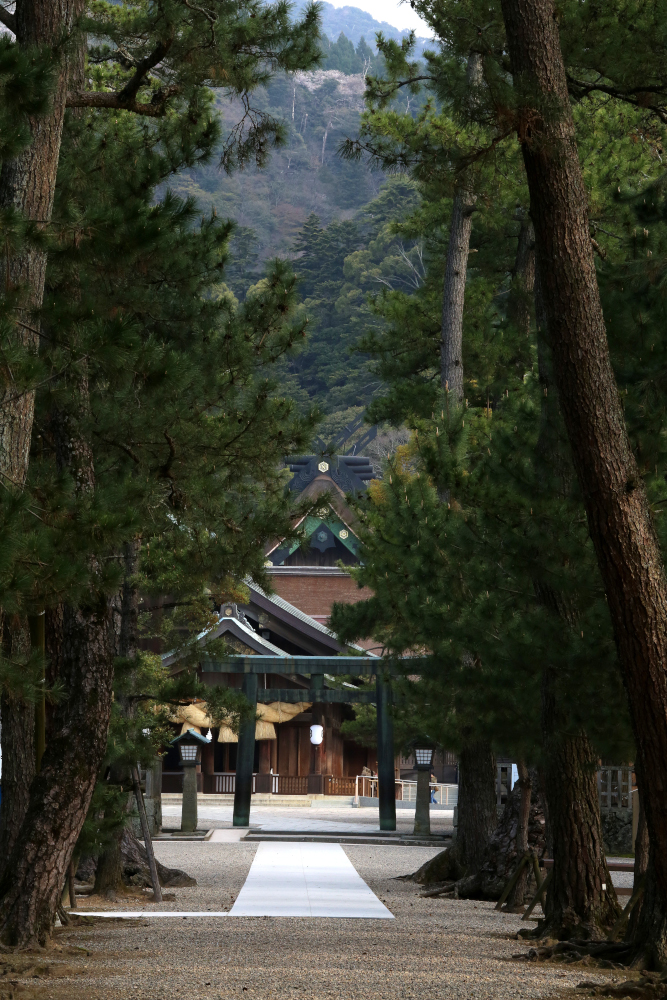
The road to Izumo Oyashiro Shrine is marked by a large white torii that was erected in 1915 to commemorate the coronation of Emperor Taisho (r. 1912–1926). It stands 23 meters high and 14 meters wide, and marks the entrance to Shinmon-dōri, a bustling, shop-lined thoroughfare that leads to the shrine precincts. Another torii stands just beyond, at the formal entrance to the shrine. Passing beneath it, visitors encounter an unusual downward-sloping path that leads toward the shrine. On the right is the small Harae no Yashiro (“purification shrine”), where visitors pray and prepare themselves before visiting the main shrine buildings. The path crosses a footbridge over the Soga River, beneath another torii, and along an avenue lined with pine trees. Visitors should be careful to avoid the middle of the path, as this space is reserved for the deities.
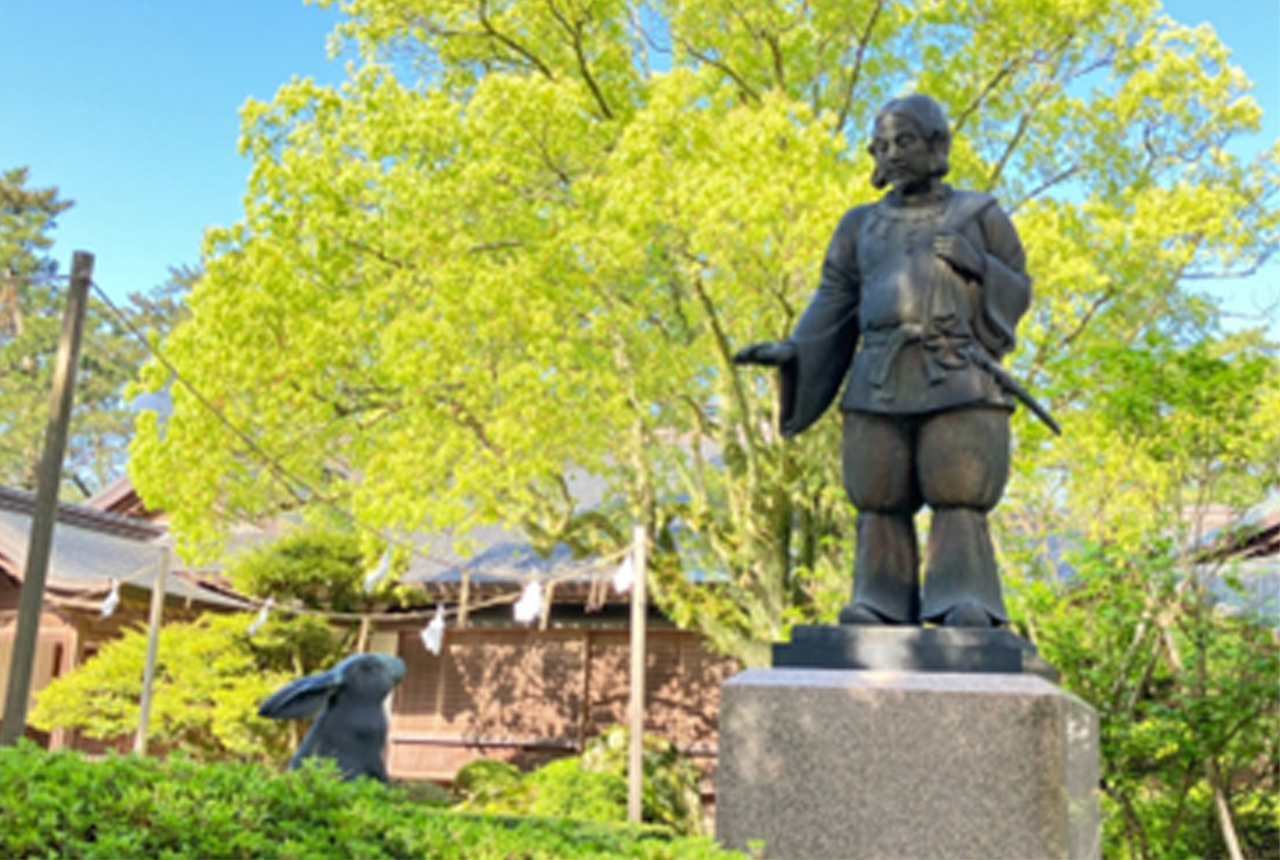
Beyond the avenue of pine trees, the grounds open up on either side to reveal two bronze statues depicting scenes from the life of Okuninushi no Kami, the shrine’s main deity. The statue on the left shows Okuninushi meeting the Rabbit of Inaba. According to the myth, Okuninushi was the only one to show the rabbit kindness as it lay wounded on the roadside. The sculpture on the right shows Okuninushi kneeling in front of a golden orb, which represents the two divine spirits that appeared before him in his youth and helped him become a deity of en-musubi (“tying of bonds between people”).
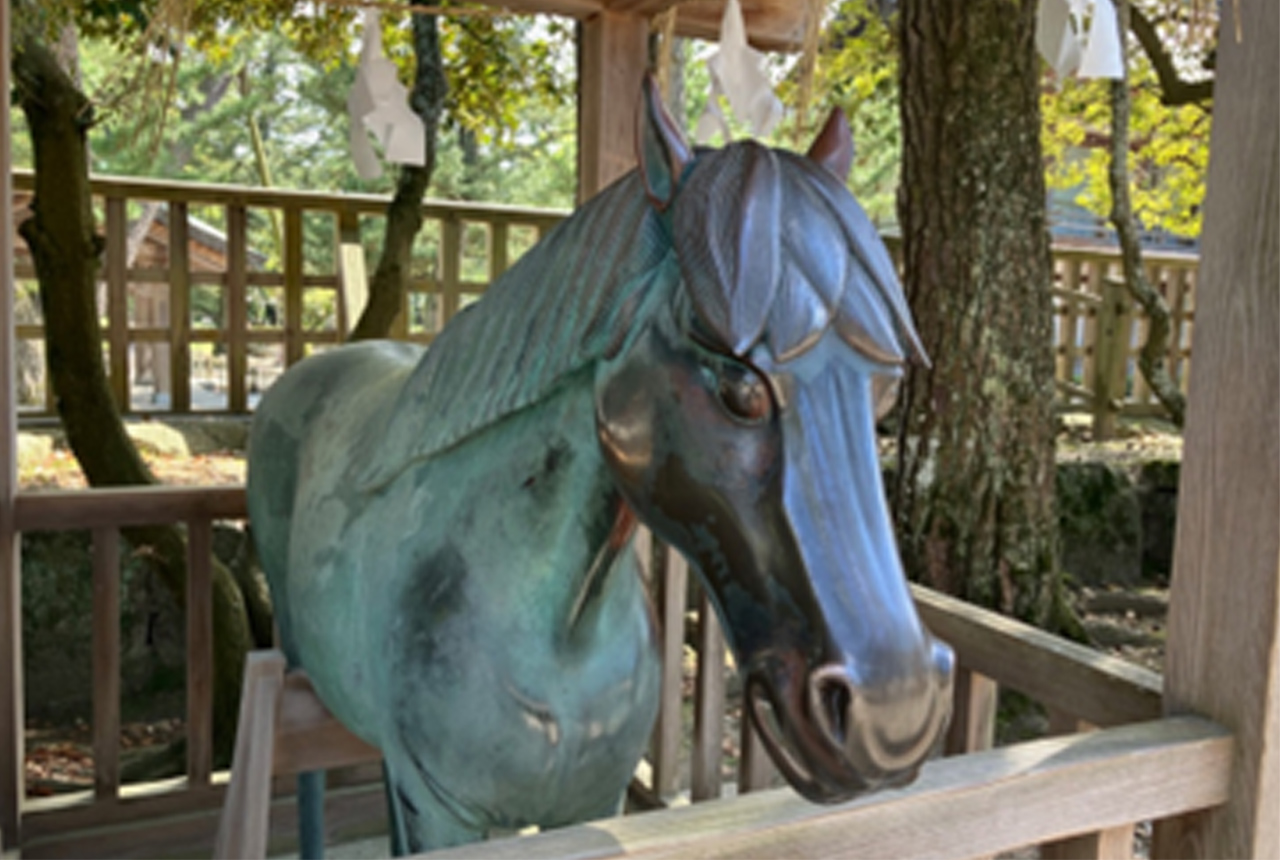
A bronze torii marks the entrance to the inner precinct. This very rare torii dates to 1666 and is one of the oldest surviving bronze torii in Japan. It was dedicated by the daimyo Mori Tsunahiro, ruler of the neighboring Choshu domain (now Yamaguchi Prefecture), in imitation of achievements by his grandfather.
Entering the inner precincts, visitors will see a bronze horse and ox, which are said to provide transportation for the shrine’s deities. The horse is known as “Kaneuma-san” and is believed to ensure safe childbirth. Directly ahead lies the Haiden (worship hall) , where visitors usually stop to make an offering and pray before proceeding toward the main sanctuary.
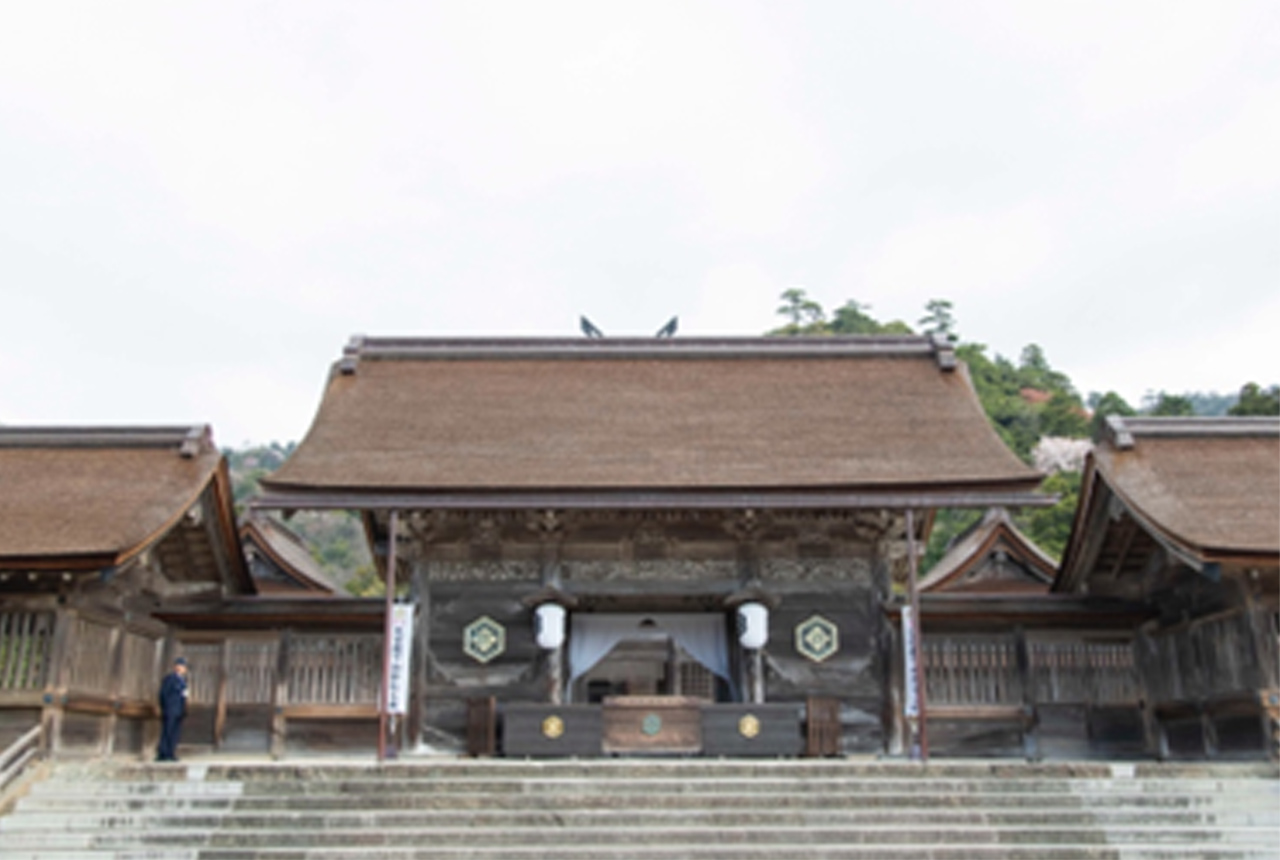
The Honden (main sanctuary) is surrounded by a fence with an elaborately carved wooden entrance called the Yatsuashi Gate. Only priests and people participating in special prayer services are allowed beyond this point. To pay one’s respects to the deities enshrined in the Honden, visitors should stand before the gate and perform a unique variation on the shrine prayer ritual: two bows, then four claps, followed by one final bow. This is twice the number of claps performed at most other shrines. During certain ritual events, priests will clap as many as eight times.
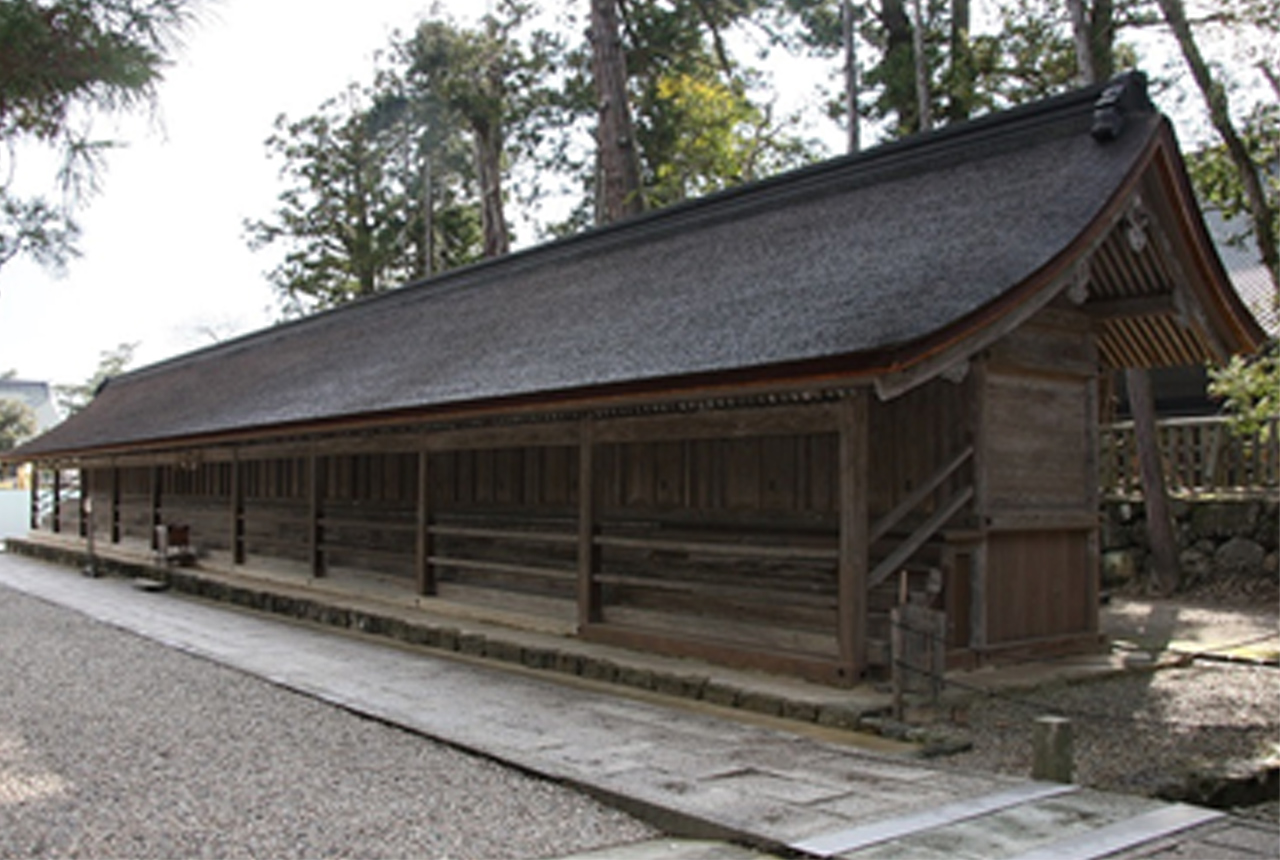
After praying at the entrance gate, some visitors proceed around to the western side of the Honden compound, where there is a small altar called the Yohaisho (“place for worshipping from afar”). Inside the Honden, the inner sanctuary that houses Okuninushi faces west. Thus, when praying at the Yōhaisho, worshippers are directly facing the deity.
To the east and west of the Honden enclosure are long, narrow structures that face the sanctuary. Called the Jukusha (“nineteen shrines”) they serve as residences for the deities that come to Izumo during the tenth lunar month, when all of the nation’s gods are thought to gather and discuss matchmaking for the coming year.
Behind the Honden is a smaller, but architecturally similar, shrine at the foot of Mt. Yakumoyama. This is Soga Shrine (Soga no Yashiro) , where Susanoo has been enshrined since his relocation in 1667.
(This English-language text was created by the Japanese Tourism Agency)
